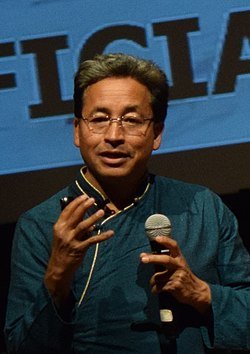Curiosity—the innate desire to explore, question, and understand—is a cornerstone of innovation, learning, and societal progress. For India, a nation of over 1.4 billion with a youthful demographic (over 50% below age 25), fostering curiosity is critical to unlocking its potential as a global leader in science, technology, and inclusive growth. This article outlines research-backed strategies to cultivate curiosity, details the roles of politicians, government, and religious leaders, addresses opposition from religious fundamentalists and superstitious groups, highlights benefits for individuals and the nation, and envisions how curiosity can shape India’s future. Grounded in credible sources, it provides a robust framework for fostering a culture of inquiry.

Table of Contents
1. Curiosity: A Catalyst for India’s Progress
Curiosity, encompassing epistemic (knowledge-seeking), perceptual (novelty-driven), and social (interpersonal) dimensions, drives cognitive engagement and problem-solving (Kashdan et al., 2018). Research shows it boosts academic performance by up to 30% and enhances resilience (Von Stumm et al., 2011), making it vital for individual and national growth.
In India, curiosity can address systemic challenges: low learning outcomes (only 23% of Class 8 students are proficient in math, ASER 2024), a 25% employability gap in tech-driven sectors (NASSCOM, 2024), and social divisions along caste and religious lines. Aligning with the National Education Policy (NEP) 2020’s vision of a knowledge economy, curiosity can leverage India’s demographic dividend to achieve its 2047 development goals.
2. Strategies to Foster Curiosity
Cultivating curiosity requires systemic, inclusive interventions across education, community engagement, and technology, tailored to India’s diverse context.
2.1 Reimagining Education
Despite near-universal primary enrollment (97.8%, UDISE 2023), India’s education system struggles with engagement and quality. Curiosity-driven reforms are essential:
- Inquiry-Based Learning: Replace rote memorization with pedagogies like problem-based learning (PBL), which encourages questioning. Karnataka’s Nali Kali program, blending play and learning, has reduced dropout rates by 15% in rural schools (UNICEF, 2020).
- Interdisciplinary Education: Integrate STEM with humanities, as per NEP 2020, to spark creativity. Atal Tinkering Labs, reaching 12 million students across 10,000+ schools, foster hands-on innovation (NITI Aayog, 2025).
- Teacher Development: Train teachers in active learning techniques. The NIPUN Bharat mission, targeting foundational literacy, emphasizes curiosity-driven pedagogy, with 200,000+ teachers trained in 2024 (Ministry of Education, 2024).
2.2 Community Engagement
Curiosity flourishes in exploratory, inclusive settings. Community initiatives can extend learning beyond schools:
- Science and Cultural Festivals: The India International Science Festival (IISF) engages 2 million+ annually, promoting scientific temper. Expanding to tier-2 and rural areas, as Vigyan Prasar does, can broaden impact (DST, 2025).
- Knowledge Hubs: Strengthen 75,000+ public libraries and establish digital learning centers. The National Mission on Libraries has digitized 4 million+ resources, enabling self-directed learning (Ministry of Culture, 2024).
- Celebrating Innovators: The National Innovation Foundation (NIF) documents 350,000+ grassroots innovations, like low-cost solar pumps. Media campaigns showcasing these can inspire problem-solving (NIF, 2025).
2.3 Technology as a Catalyst
Technology can democratize curiosity across India’s urban-rural divide:
- EdTech Platforms: DIKSHA (50 million+ users) and SWAYAM (4 million+ enrollments) deliver multilingual, interactive content, fostering curiosity (Ministry of Education, 2025).
- Gamified Learning: Apps like Byju’s and virtual reality labs in 700+ schools make learning engaging, improving retention by 25% (NITI Aayog, 2024).
- Digital Access: BharatNet has connected 650,000+ villages, enabling access to the National Digital Library of India (60 million+ resources), empowering self-learners (MeitY, 2025).
3. Roles of Key Stakeholders
Politicians, government, and religious leaders must collaborate to create a curiosity-driven ecosystem, navigating cultural and social complexities.
3.1 Politicians
Politicians shape policy and public narratives, critical for fostering curiosity:
- Advocate for Reforms: Push for NEP 2020 implementation, with education spending at 4.8% of GDP in 2025 (Union Budget, 2025). Address 1.4 million teacher vacancies to enable curiosity-focused teaching (NUEPA, 2024).
- Promote Unity: Counter divisive caste or religious rhetoric, encouraging open inquiry. The National Youth Parliament engages 1.2 million youth, fostering curiosity about governance (Ministry of Youth Affairs, 2025).
- Inspire Through Success: Highlight achievements like ISRO’s Chandrayaan-3 to motivate STEM careers, inspiring 500,000+ students annually (ISRO, 2024).
3.2 Government
The government must build infrastructure and policies to sustain curiosity:
- Fund Research: Increase R&D spending (0.8% of GDP in 2025) through the ₹1.5 lakh crore Anusandhan National Research Foundation, supporting curiosity-driven science (Budget 2025).
- Strengthen Institutions: Elevate IITs and IISc to global top 50, with 20% more industry-academia partnerships (QS Rankings, 2025).
- Local Innovation: Empower states via innovation clusters, like Gujarat’s i-Hub, integrating 500+ startups with universities (NITI Aayog, 2025).
3.3 Religious Leaders
With 79% of Indians valuing religion (Pew Research, 2021), religious leaders can influence attitudes toward inquiry:
- Endorse Rationality: Promote scientific temper, as Swami Vivekananda did, blending spirituality with inquiry. Jain leaders’ support for STEM education in 200+ schools is a model (Jain Education Board, 2024).
- Interfaith Dialogue: Facilitate unity, reducing tensions that stifle curiosity. The Interfaith Harmony Foundation engages 600+ leaders annually (IHFI, 2025).
- Community Programs: Host science and literacy workshops in religious institutions, like gurudwara-led education drives reaching 100,000+ learners (SGPC, 2024).
4. Addressing Opposition from Religious Fundamentalists and Superstitious Groups
Efforts to foster curiosity may face resistance from religious fundamentalists and superstitious groups, who may perceive inquiry as a threat to traditional beliefs. This opposition, rooted in fear of change or loss of authority, can manifest as:
- Resistance to Scientific Temper: Fundamentalist groups, across religions, may oppose curricula promoting critical thinking, fearing it challenges dogmatic practices. For instance, protests against evolution in textbooks have occurred in some states (NCERT, 2023).
- Superstition-Driven Pushback: Superstitious beliefs, like astrology dictating life decisions (30% of Indians consult astrologers regularly, India Today 2023), may discourage questioning. Groups promoting rituals over rationality can resist curiosity-driven education.
- Communal Sensitivities: Fundamentalists may frame curiosity as “Western” or “anti-cultural,” fueling communal tensions, as seen in debates over temple entry reforms (Sabarimala, 2018).
Mitigation Strategies
- Engage Respectfully: Involve moderate religious leaders to bridge gaps, as seen in the Ramakrishna Mission’s science outreach programs, blending inquiry with cultural values (RKM, 2024).
- Community-Based Education: Use local languages and contexts in science workshops to align with cultural identities, reducing perceptions of threat (Vigyan Prasar, 2025).
- Awareness Campaigns: Leverage media to debunk myths, like CSIR’s “Science for All” campaign, reaching 10 million+ via community radio (CSIR, 2025).
- Policy Safeguards: Ensure curricula balance respect for traditions with scientific inquiry, as NEP 2020 advocates, to minimize backlash (Ministry of Education, 2024).
5. Benefits of a Curiosity-Driven Society
Curiosity offers transformative benefits, backed by evidence, for individuals and India.
5.1 Individual Benefits
- Academic and Career Growth: Curiosity boosts STEM performance by 25%, preparing youth for 4 million+ tech jobs by 2030 (Von Stumm et al., 2011; NASSCOM, 2024).
- Mental Health: Curious individuals report 18% higher life satisfaction, vital in a nation with 150 million+ facing mental health issues (Kashdan et al., 2018; Lancet, 2024).
- Social Skills: Social curiosity enhances empathy, reducing prejudice in India’s diverse society (Hart et al., 2020).
5.2 National Benefits
- Innovation and Economy: Curiosity fuels innovation, with India’s $4.2 trillion economy projected to grow 7% annually via tech advancements (Economic Survey, 2025).
- Social Cohesion: Inquiry bridges divides, with 88% of Indians valuing religious freedom as a dialogue platform (Pew Research, 2021).
- Global Competitiveness: A curious workforce can lead in AI and renewables, with 1.7 million STEM graduates annually (NASSCOM, 2025).
6. Shaping India’s Future
A curiosity-driven India can redefine its trajectory by 2047:
6.1 Economic Leadership
Curiosity will drive a $10 trillion knowledge economy, with tech contributing 25% of GDP by 2035 (RBI, 2025). Emulating Singapore’s innovation-led growth, India can excel in semiconductors and green tech.
6.2 Social Equity
Critical thinking can reduce child marriage (18% prevalence) and caste discrimination, with female literacy at 78% in 2024 (NFHS-6, 2024; NSO, 2025).
6.3 Democratic Strength
Curiosity fosters informed citizenship, with 70% favoring democracy (CSDS-Lokniti, 2024), enhancing accountability and reducing misinformation.
6.4 Global Influence
India can lead in climate solutions (600 GW renewable target by 2030) and health, building on its vaccine diplomacy (MEA, 2024), boosting soft power.
7. Challenges and Solutions
Beyond fundamentalist opposition, key challenges include:
- Cultural Barriers: Job-centric education stifles exploration. Solution: Campaigns like “Innovate India” shift mindsets (NITI Aayog, 2025).
- Resource Gaps: Low R&D funding limits scale. Solution: Public-private partnerships, like Tata’s research hubs, bridge gaps (Tata Trust, 2025).
- Digital Divide: 35% of rural India lacks internet. Solution: BharatNet targets 700,000+ villages by 2027 (MeitY, 2025).
8. Conclusion
Fostering curiosity is a strategic necessity for India’s rise as a developed nation by 2047. Through education reform, community engagement, and technology, India can cultivate a culture of inquiry, despite resistance from fundamentalist and superstitious groups. Politicians, government, and religious leaders must unite to create an inclusive ecosystem, balancing tradition with progress. The rewards—innovation, equity, and global leadership—will transform India into a resilient, united, and influential nation. As Ken Robinson (2006) noted, “Curiosity is the engine of achievement.” Igniting this engine will propel India toward a brighter future.
References
- Kashdan, T. B., et al. (2018). The Five-Dimensional Curiosity Scale. Journal of Research in Personality, 76, 14-23.
- Von Stumm, S., et al. (2011). The Hungry Mind: Intellectual Curiosity. Perspectives on Psychological Science, 6(6), 574-588.
- ASER Centre. (2024). Annual Status of Education Report 2024. Pratham Foundation.
- NASSCOM. (2024). India Tech Industry Report 2024. NASSCOM.
- UDISE. (2023). Unified District Information System for Education Report. Ministry of Education.
- UNICEF. (2020). Nali Kali: Joyful Learning in Karnataka. UNICEF India.
- NITI Aayog. (2025). Atal Innovation Mission: Annual Report. Government of India.
- Ministry of Education. (2024). NIPUN Bharat Progress Report. Government of India.
- Department of Science and Technology. (2025). India International Science Festival Report. Government of India.
- Ministry of Culture. (2024). National Mission on Libraries: Annual Report. Government of India.
- National Innovation Foundation. (2025). Grassroots Innovations Database. NIF India.
- Ministry of Electronics and IT. (2025). BharatNet Progress Report. Government of India.
- Union Budget. (2025). Economic Survey 2024-25. Ministry of Finance.
- NUEPA. (2024). Teacher Vacancy Report. National University of Educational Planning.
- Ministry of Youth Affairs. (2025). National Youth Parliament Program. Government of India.
- ISRO. (2024). Chandrayaan-3 Impact Report. Indian Space Research Organisation.
- QS World University Rankings. (2025). Global University Rankings. QS Quacquarelli Symonds.
- Pew Research Center. (2021). Religion in India: Tolerance and Segregation. Pew Research.
- Jain Education Board. (2024). STEM Education in Jain Schools. JEB India.
- Interfaith Harmony Foundation of India. (2025). Annual Report. IHFI.
- SGPC. (2024). Community Education Initiatives. Shiromani Gurdwara Parbandhak Committee.
- Hart, J., et al. (2020). Social Curiosity and Interpersonal Perception. Social Psychological Bulletin, 15(2).
- Lancet. (2024). Mental Health in India: Challenges and Opportunities. The Lancet.
- Economic Survey. (2025). India Economic Outlook 2024-25. Ministry of Finance.
- RBI. (2025). Digital Economy Projections 2035. Reserve Bank of India.
- NFHS-6. (2024). National Family Health Survey 2023-24. Ministry of Health.
- NSO. (2025). Literacy Rate Survey 2024. National Statistical Office.
- CSDS-Lokniti. (2024). State of Democracy in India Survey. Centre for the Study of Developing Societies.
- MEA. (2024). India’s Vaccine Diplomacy Report. Ministry of External Affairs.
- NCERT. (2023). Textbook Controversy Report. National Council of Educational Research and Training.
- India Today. (2023). Astrology in India: A Cultural Survey. India Today.
- Ramakrishna Mission. (2024). Science Outreach Programs. RKM India.
- Vigyan Prasar. (2025). Science Communication Report. Department of Science and Technology.
- CSIR. (2025). Science for All Campaign Report. Council of Scientific and Industrial Research.
- Tata Trust. (2025). Research and Innovation Initiatives. Tata Trusts.
- Robinson, K. (2006). Do Schools Kill Creativity? TED Talk.




